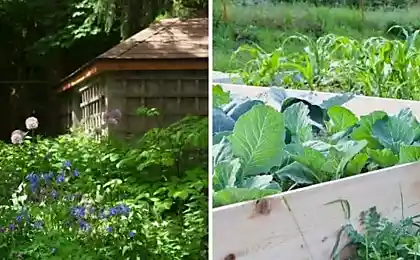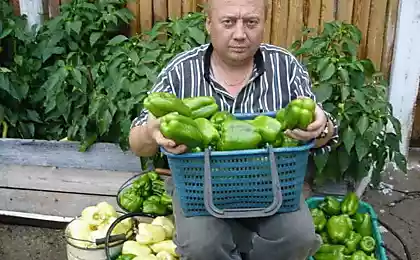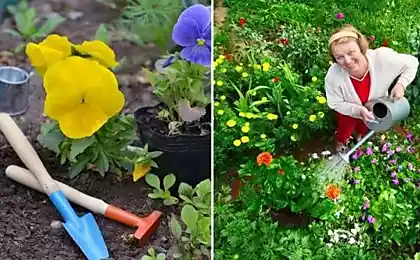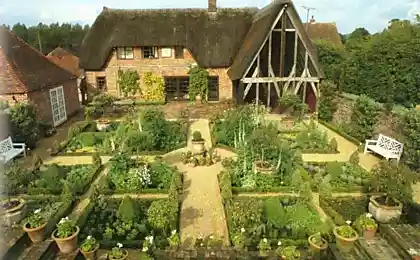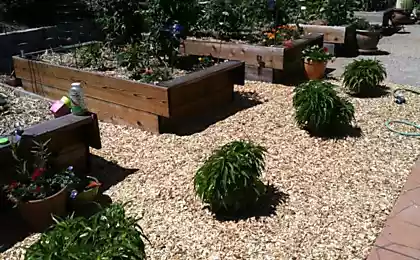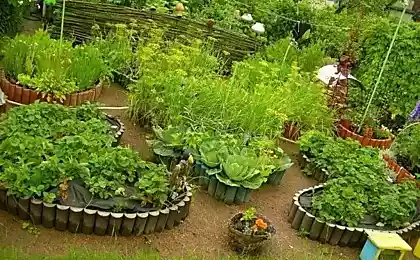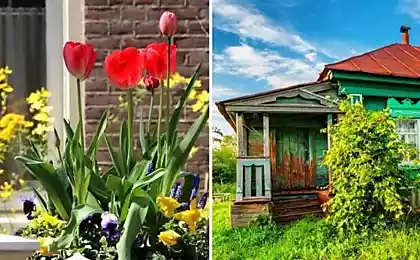190
How to arrange high beds in the summer cottage
The spring season is approaching and gardeners are beginning to plan future plantings. A clean, well-kept garden with smooth beds and generous harvests is the dream of any land owner, but how to implement it?

For thousands of farmers, the answer was the method of American botanist and vegetable expert Jacob Mittlider. The essence of its technology is to grow densely planted vegetable crops on narrow, perimeter-bound beds separated by wide aisles.

"Site" will give readers an idea of the advantages of the garden by Mittlider and tell you how to make tall beds with your own hands.
High beds What are the advantages
How to arrange beds on Mittleider
The Mittleider Method It is not labor-intensive and highly productive, in addition, it makes it possible to grow vegetables in areas with a harsh climate and scarce lands. But due to the widespread use of mineral fertilizers, it is not approved by supporters of “pure” organic farming.

Many gardeners, who at first followed exactly the technology of Dr. Mittleider, over time modified it and began to introduce not only mineral but also organic fertilizers.
In short, taking all the best of the agrotechnical techniques of the American expert, they can and should be supplemented by individual experience and experience. Create your own narrow beds and get a rich harvest. Good luck!

For thousands of farmers, the answer was the method of American botanist and vegetable expert Jacob Mittlider. The essence of its technology is to grow densely planted vegetable crops on narrow, perimeter-bound beds separated by wide aisles.

"Site" will give readers an idea of the advantages of the garden by Mittlider and tell you how to make tall beds with your own hands.
High beds What are the advantages
- Gardens organized according to the Mittleider method do not require annual excavation of the land. Enough to loosen to ten centimeter depth. With this approach, the strength of the summer resident is significantly saved, there is no dirt in sight, weeds on the beds practically do not grow.
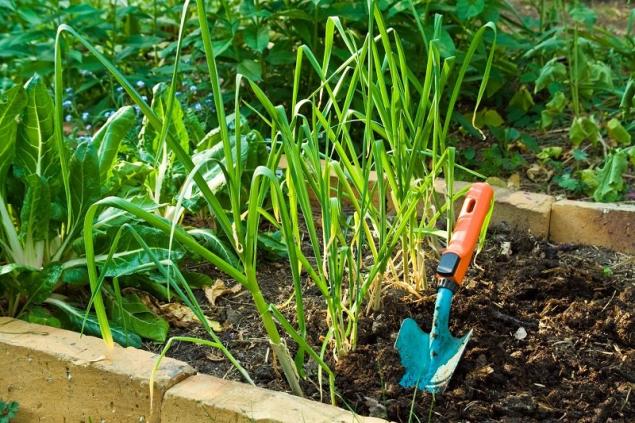
- Water for irrigation is required less, because there is an excellent drainage system in the beds, but the land in such a garden remains moist for a long time.
- High beds allow you to plant crops much earlier than usual, and at the same time such a bed can easily transform into a greenhouse or greenhouse. It is enough just to adjust the arcs and pull a film or covering material on them.
- The harvest in wooden beds ripens earlier than usual, so they are indispensable in the harsh conditions of the Russian North.
- Box beds are profitable in those places where soil is often flooded and the roots of plants rot. A logical solution would be to place them on soils unsuitable for growing vegetable crops.
- With such a device, the bed is easy to organize the introduction of mineral fertilizers into the soil.
- High beds give the maximum harvest with a minimum area at low cost.
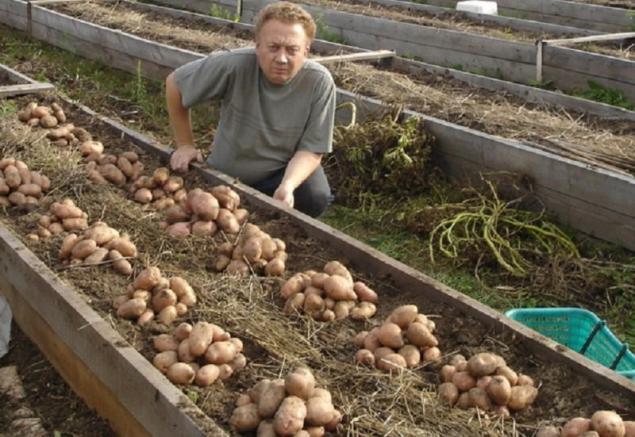
How to arrange beds on Mittleider
- Selection and alignment
Optimal planting geometry is an important part of the method, contributing to the efficient use of nutrients, water and light by plants, their rapid, vigorous growth and proper development.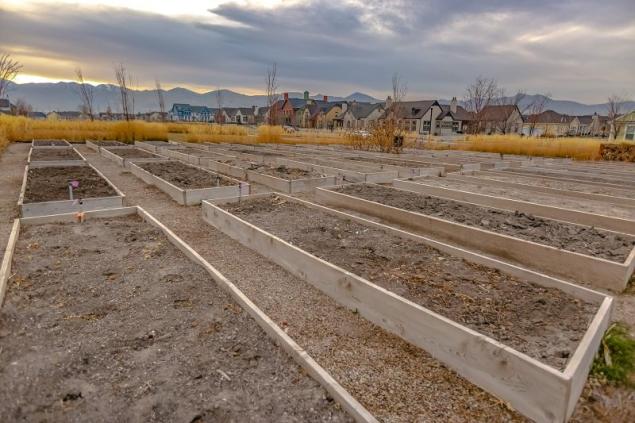
The key to the correct lighting of plants and the uniform distribution of nutrient mineral solutions is the exact observance of the horizontality of the beds. Therefore, at this stage, it is necessary to carefully level the site with the help of a level or construction level, fill all the holes.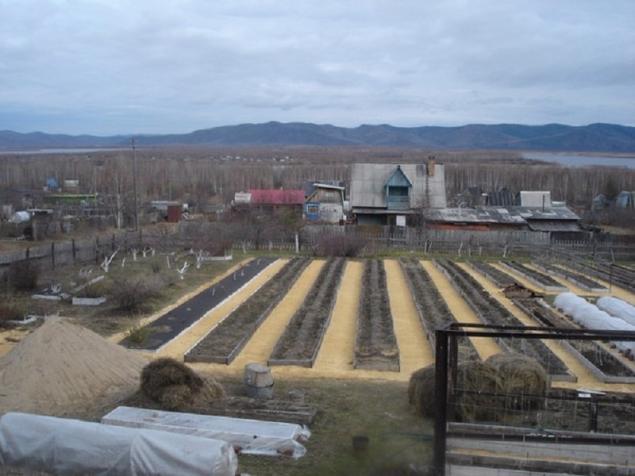
Perfect. bedside Mittlider is south-north. All beds must have a fixed width of 0.45 m. The width of the passages should be 0.9 m, and the length, depending on the size of the section, can reach up to 9 m. - Construction of boxes
The beds must be separated from the tracks by sides. They can be made of any material, but it is preferable to take wooden boards treated with moisture-resistant compositions and a mixture against pests.
Russian follower of Mittlider Igor Lyadov creatively reworked the American method taking into account Russian realities. He advises to lay on the bottom of the box cardboard, this material prevents the appearance of weeds, and decomposing, serves as an excellent biofuel.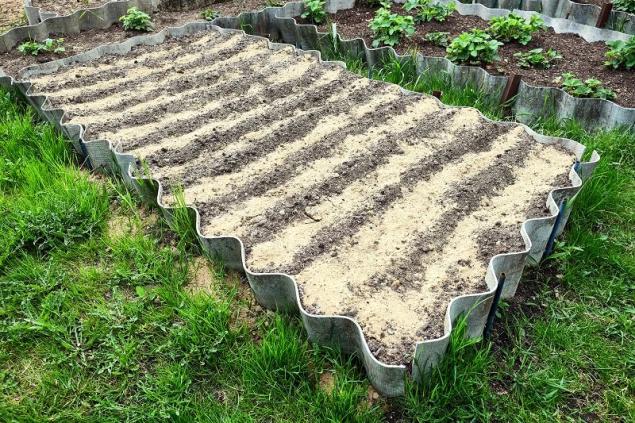
The second layer after cardboard should be a five-centimeter layer of sand. Then there is a layer of rough plant residues (branches, bottom). Then small plant residues: straw, cut hay. Then we lay a nutrient layer consisting of compost, peat, humus, manure. And the last layer is ordinary garden land. - Crop planting schemes
Most crops on the Mittlider beds are recommended to be planted in two rows along the sides with a margin from the edge of the side in 10 cm. The remaining 25 centimeter space between the rows is convenient to make fertilizer mixtures and water.
In two rows, most root vegetables (carrots, daikon, beets, radishes), leeks, beans, onions, green peas, corn and garlic are planted. In two rows with a shift (in staggering order) planted nomadic salad, potatoes and seedlings of various types of cabbage. In one row along one of the sides are planted squash, sweet peppers, pumpkins and tomatoes. - Features of watering and feeding
Watering narrow beds, deliver water directly to the root zone. This method of irrigation, unlike raining, reduces the likelihood of fungal diseases and does not contribute to the growth of weeds, prevents burns of leaves.
Applying the right fertilizer is one of the most important points in the Mittlider vegetable growing program. During germination and ripening, vegetables especially need increased nutrition. Feeding on narrow ridges should be carried out weekly.
For vegetables and greens, the following composition of fertilizers is needed: potassium and phosphorus in equal parts, nitrogen, molybdenum, magnesium and zinc. Finished fertilizers are used at the rate of 60 grams per 1 square meter of the ridge.
The Mittleider Method It is not labor-intensive and highly productive, in addition, it makes it possible to grow vegetables in areas with a harsh climate and scarce lands. But due to the widespread use of mineral fertilizers, it is not approved by supporters of “pure” organic farming.

Many gardeners, who at first followed exactly the technology of Dr. Mittleider, over time modified it and began to introduce not only mineral but also organic fertilizers.
In short, taking all the best of the agrotechnical techniques of the American expert, they can and should be supplemented by individual experience and experience. Create your own narrow beds and get a rich harvest. Good luck!















